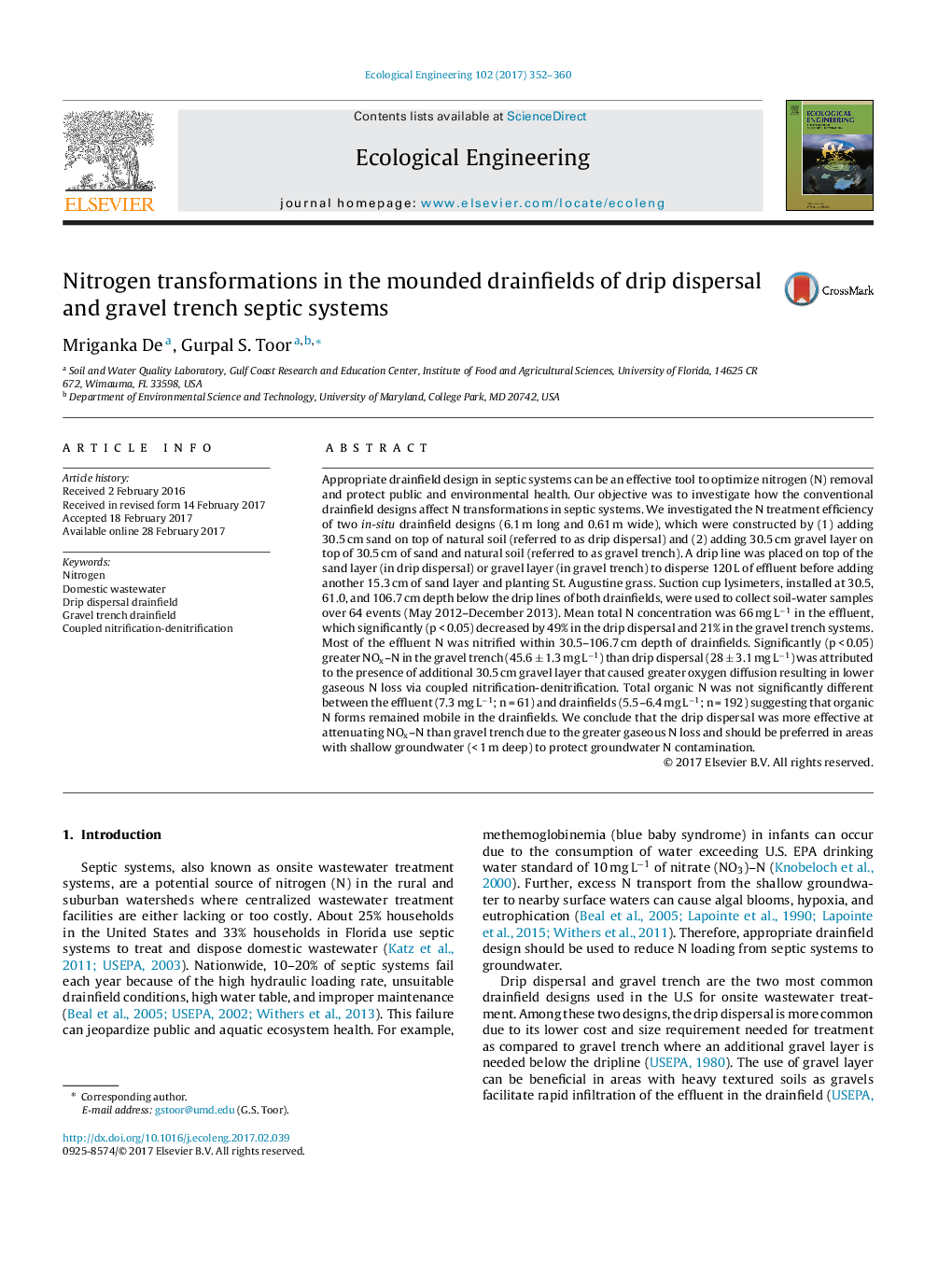| Article ID | Journal | Published Year | Pages | File Type |
|---|---|---|---|---|
| 5743778 | Ecological Engineering | 2017 | 9 Pages |
â¢Fate of effluent applied N was investigated in septic system drainfields.â¢Drip dispersal drainfield attenuated more effluent-borne N than gravel trench.â¢Coupled nitrification-denitrification caused more gaseous N loss in drip dispersal.â¢Presence of gravel in gravel trench induced aerobic conditions causing less N loss.â¢Organic N was mobile and leached below drip dispersal and gravel trench drainfields.
Appropriate drainfield design in septic systems can be an effective tool to optimize nitrogen (N) removal and protect public and environmental health. Our objective was to investigate how the conventional drainfield designs affect N transformations in septic systems. We investigated the N treatment efficiency of two in-situ drainfield designs (6.1 m long and 0.61 m wide), which were constructed by (1) adding 30.5 cm sand on top of natural soil (referred to as drip dispersal) and (2) adding 30.5 cm gravel layer on top of 30.5 cm of sand and natural soil (referred to as gravel trench). A drip line was placed on top of the sand layer (in drip dispersal) or gravel layer (in gravel trench) to disperse 120 L of effluent before adding another 15.3 cm of sand layer and planting St. Augustine grass. Suction cup lysimeters, installed at 30.5, 61.0, and 106.7 cm depth below the drip lines of both drainfields, were used to collect soil-water samples over 64 events (May 2012-December 2013). Mean total N concentration was 66 mg Lâ1 in the effluent, which significantly (p < 0.05) decreased by 49% in the drip dispersal and 21% in the gravel trench systems. Most of the effluent N was nitrified within 30.5-106.7 cm depth of drainfields. Significantly (p < 0.05) greater NOx-N in the gravel trench (45.6 ± 1.3 mg Lâ1) than drip dispersal (28 ± 3.1 mg Lâ1) was attributed to the presence of additional 30.5 cm gravel layer that caused greater oxygen diffusion resulting in lower gaseous N loss via coupled nitrification-denitrification. Total organic N was not significantly different between the effluent (7.3 mg Lâ1; n = 61) and drainfields (5.5-6.4 mg Lâ1; n = 192) suggesting that organic N forms remained mobile in the drainfields. We conclude that the drip dispersal was more effective at attenuating NOx-N than gravel trench due to the greater gaseous N loss and should be preferred in areas with shallow groundwater (< 1 m deep) to protect groundwater N contamination.
Graphical abstractDownload high-res image (143KB)Download full-size image
